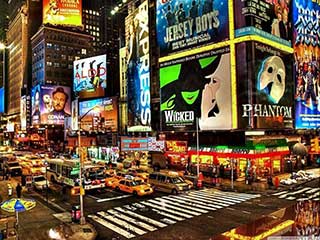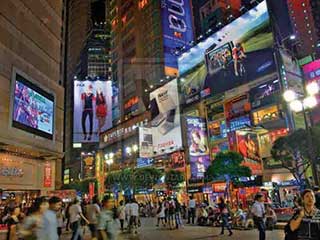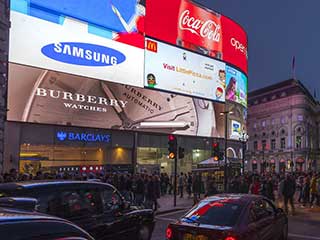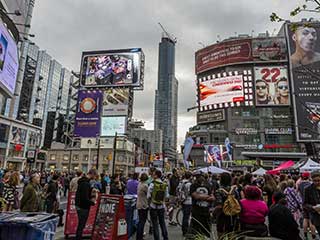Times Square: American McDonald’s of LED technology
The story began with the well-planned labor organization on first Ford car factories in the USA. There the pattern was born that later spread all over the world. From that moment on the world became smaller and faster. Jobs have narrow specialization; people are focused on performing one specific task to the point of perfection. The era of high labor productivity began.
The pattern quickly spread over other industrial and commercial spheres. For example, it was quickly adapted by fast food industry typical of the McDonald’s style. In fact, today McDonald’s became a generalized concept of standardization. It is the standard of quality (not necessarily high quality) that is used everywhere to save time and minimize expenses.
All this is a preamble to our short story about “Time” squares. The first Times Square appeared in New York in 1904 when a building in the Square was chosen as a headquarters for the famous New York Times newspaper. The New Year’s Eve Ball was installed on the roof of the building and from 1907 became a symbol of New Year celebrations. In fact, from this technological miracle begins the transformation of the square into the testing ground for new technology, especially, informational and lighting industry.
 |
 |
| LED screens on Times Square in New York | LED screens on Times Square in Hong Kong |
Today Times Square in New York is decorated out of all proportion by LED screens: large and small, interactive and not, by screens of all shapes and types. Each major manufacturer of LED screens aspires to install their screens on this place because this is the best promotion and self-advertising in the world. The Times Square already has its own historians, image makers and journalists. One of them – Louis Brill, who frequently sends articles to this Journal, devoted numerous detailed technological articles to Times Square with stories about noticeable and sometimes unique LED innovations.
And when the Times Square won attention, love and respect as a “crossroads of the world” the time has come to clone the idea McDonald’s-style in other cities. Suddenly there appeared Times Square in Tokyo (Japan), in Toronto (Canada), Johannesburg (South Africa), Kuala Lumpur (Malaysia), Piccadilly Circus in London, Cavill Ave in the center of Surfers Paradise (Australia) and possibly in many other cities that we never had a chance to visit.
 |
 |
| LED screens on Piccadilly Circus in London | LED screens on Dundas Square in Toronto |
Obviously, every city and square is unique. Every place is characterized by cultural and national identity, but one common feature is nevertheless present in all places: abundance of multicolor advertising and informational screens and signs that transform common trade and commercial zone into the carnival of colors and dynamics of visual imagery.
Each of those Times Square is a testing ground for technological innovations in the area of LED screen manufacturing. Here screens replace each other much faster than in other places. The main task of any screen in the Times Square (apart from obvious commercial advertising) is self-promotion, demonstration of technological achievements and innovations. In such places we first encountered screens with tight pitch, or first outdoor SMD screens, here manufacturers experiment with shapes (for example, round or concave screens) and content (interactive screens).
Among all copies of American Times Square one stands apart. It is the Times Square in Hong Kong. Well, it is not a square in a strict sense of the word. Rather, it is a small district with several squares and intersecting streets full of shopping centers and boutiques. But what is more important: the Hong Kong-type Times Square outdid the famous original in the sheer number of diverse screens, in the ergonomic way of matching city architecture.
Similar to New York, almost all facades are covered with huge screens, and the new unusual ball-shaped building of Apple Trade Center is fully covered with LED strips. It is hard to imagine how this district will look like when screen technology finally moves into the 3D (to be expected shortly). Hong Kong differs from New York in more liberal legislation that allows LED advertising almost without limitations. New York accumulated all LED screens around Times Square and in Hong Kong screens are everywhere.
This happens time and again: students surpass their teachers. The idea of an LED McDonald’s as festively decorated squares is catching up and expands to new areas around the globe. Apparently, the time will come when every city in the world will have a Times Square of its own.





